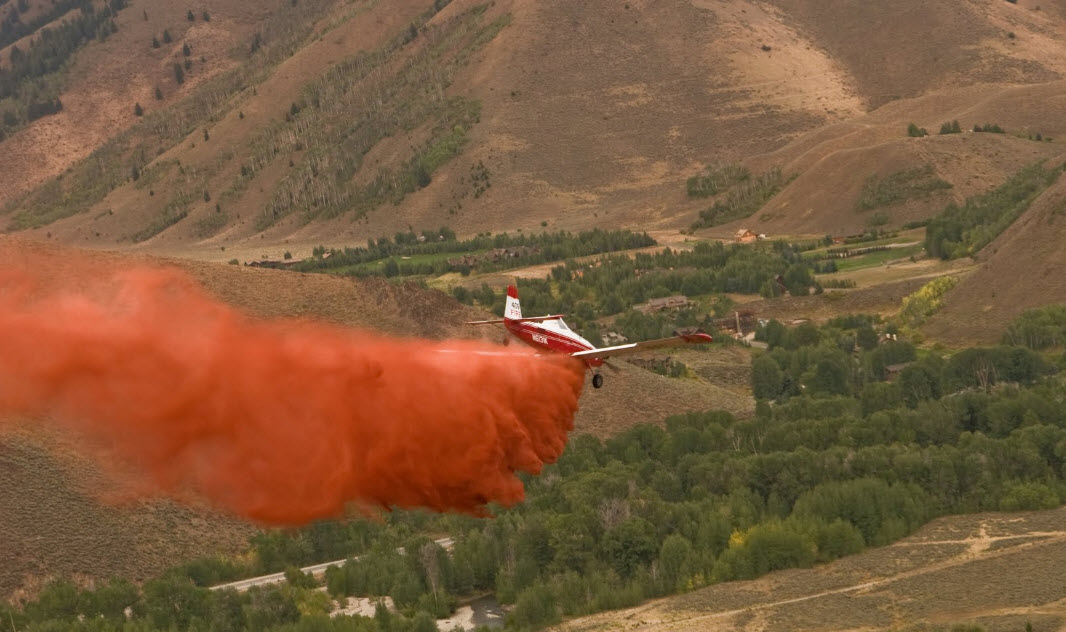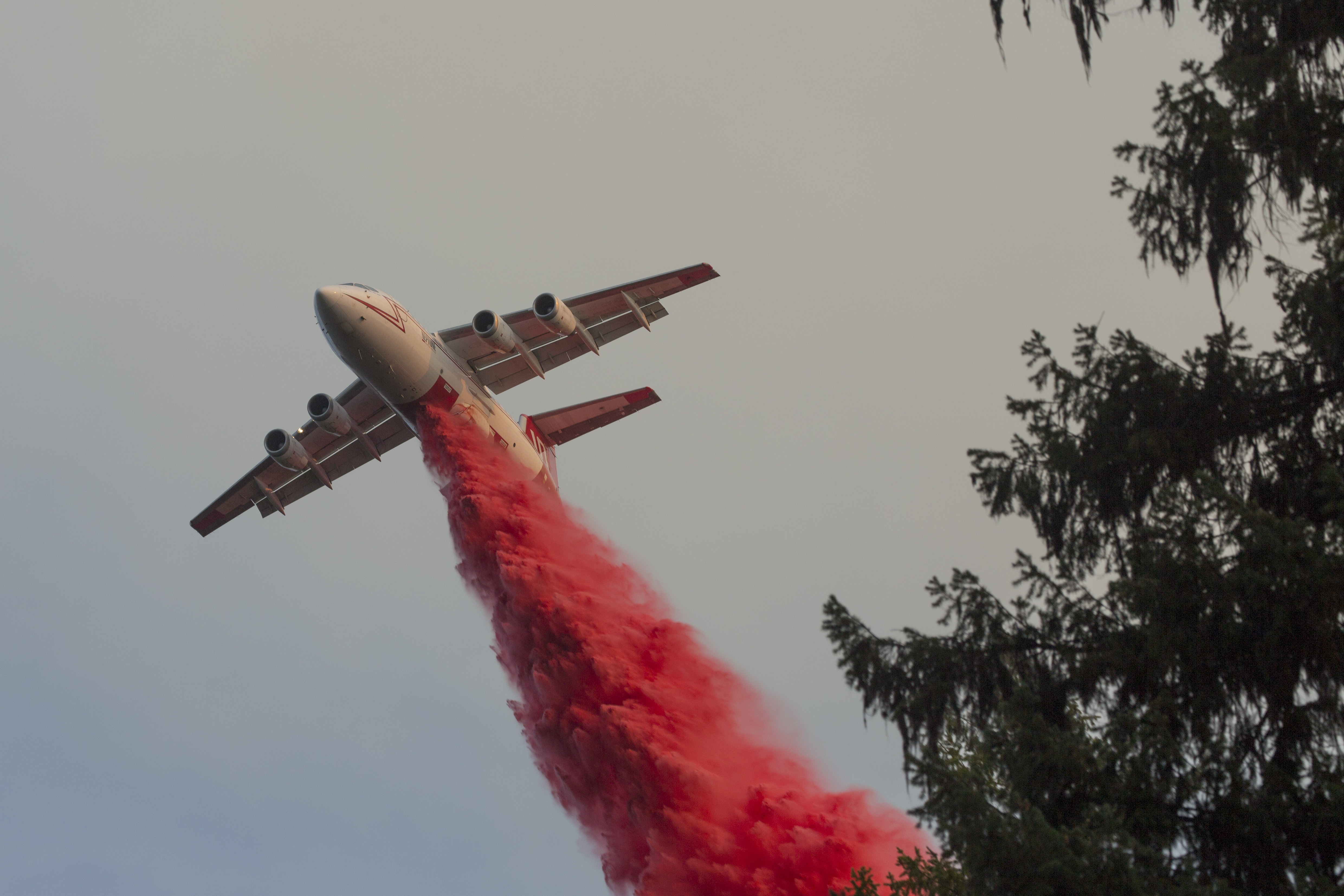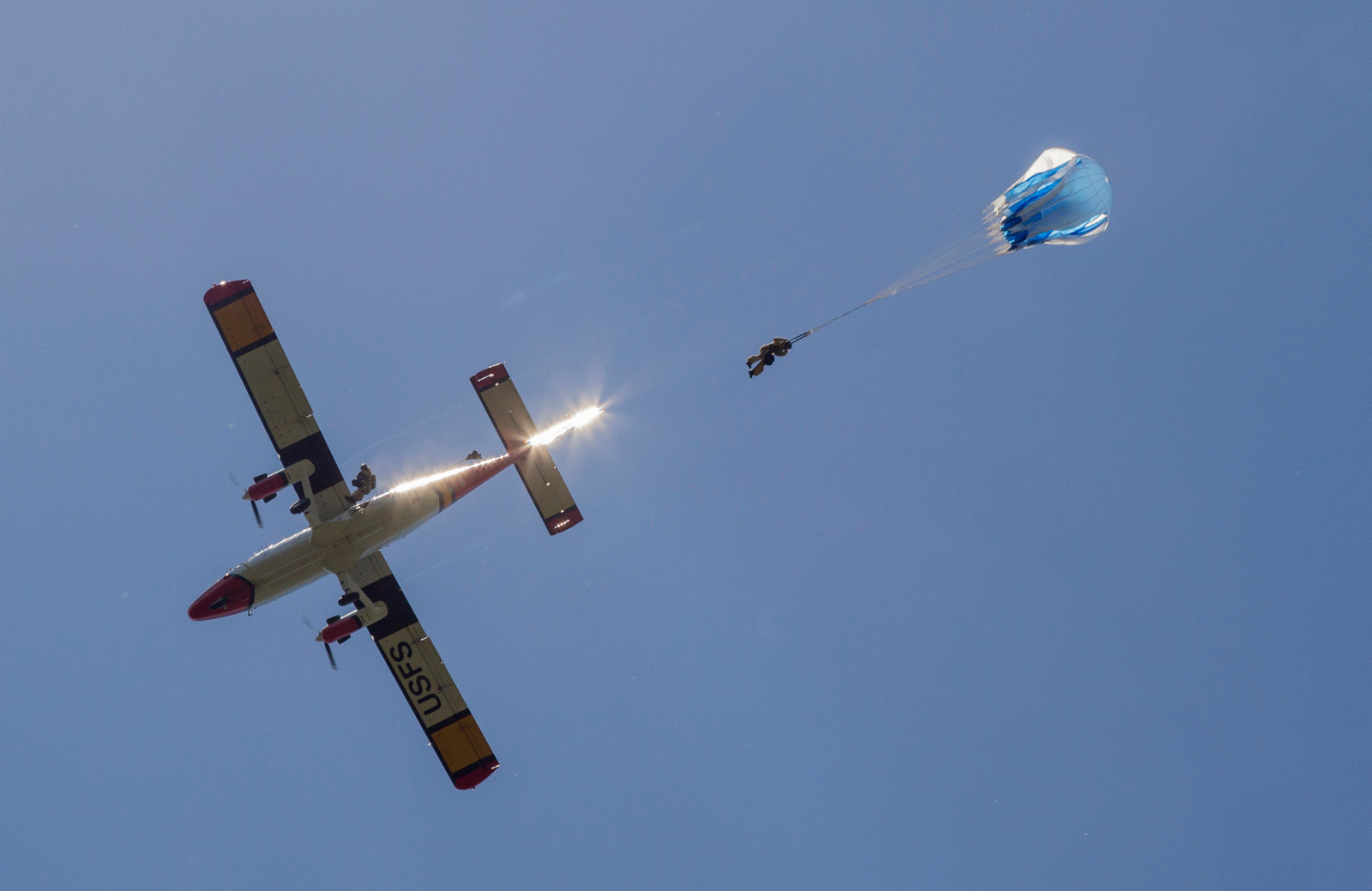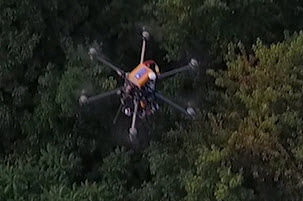Planes
The Forest Service uses planes of many types and sizes to manage wildland fires. Some are owned by the Forest Service, many are leased or contracted and during times of high fire activity, military aircraft may be activated. When aircraft aren’t being used to support wildland fires, they may be used for other natural resource management activities, such as conducting aerial surveys of wildlife populations and forest health.
Single Engine Airtanker (SEAT)
Single Engine Airtankers (SEATs) can deliver up to 800 gallons of fire retardant to support firefighters on the ground. These small airplanes can reload and operate in areas where larger airtankers cannot. Aircraft types: Air Tractor AT-802.
Large Airtankers
Large Airtankers (LATs) can deliver from 2,000 to 4,000 gallons of fire retardant to support firefighters on the ground. Aircraft types: P2V, HC-130H, BAe-146, MD-87, C-130Q, RJ85, C-130 H & J equipped with Modular Airborne Fire Fighting Systems (MAFFS).
Very Large Airtankers (VLAT)
Very Large Airtankers (VLATs) are capable of delivering over 8,000 gallons of fire retardant to support firefighters on the ground. Aircraft Type: DC-10.
Water Scooper
Water Scoopers are amphibious aircraft that skim the surface of a water body and scoop water into an onboard tank and then drop it on a fire. Aircraft types: Bombardier CL-415 and Air Tractor Fire Boss.
Smokejumper Aircraft
Smokejumper aircraft deliver smokejumpers and cargo by parachute for initial attack and extended support of wildland fires. Each of the aircraft can carry eight to ten Smokejumpers and their initial supply of gear. Aircraft types: DeHavilland DH-6 300 series Twin Otter, Shorts Sherpa C-23A and SD3-60, Dornier 228, and CASA 212.
Unmanned Aircraft Systems
Unmanned Aircraft Systems (UAS) have great potential for use on wildland fires and in natural resource management. In contrast, unauthorized public UAS flights over or near wildfires threaten the safety of aerial and ground firefighters and users are encouraged to “know before you fly”.
Aerial Supervision Module/Lead Plane
Aerial supervision modules/leadplanes coordinate, direct, and evaluate airtanker operations. Aerial supervision module/lead plane pilots and/or air tactical supervisors communicate with firefighters on the ground, other fire aircraft, and airtanker pilots. They release white smoke to show airtanker pilots where to drop fire retardant. Aircraft types: Beechcraft King Air 90 and Beechcraft King Air 200.
Air Attack
Air tactical or air attack planes coordinate aerial firefighting aircraft over wildland fires. They provide vital eyes in the sky for firefighters on the ground, and ensure safe aviation operations. Aircraft types: Twin Commander 500 and 600 are most common.
Resource Management
The Forest Service uses airplanes for a wide variety of other missions in managing public lands. These missions include forest health – and wildlife surveys, law enforcement, gathering infrared data, fire detection, and transporting personnel and cargo. Aircraft types: Cessna 206, Aero Commander 500, King Air 200, DeHavilland DHC-2 Beaver, Piper Super Cub, and Cessna 185.






